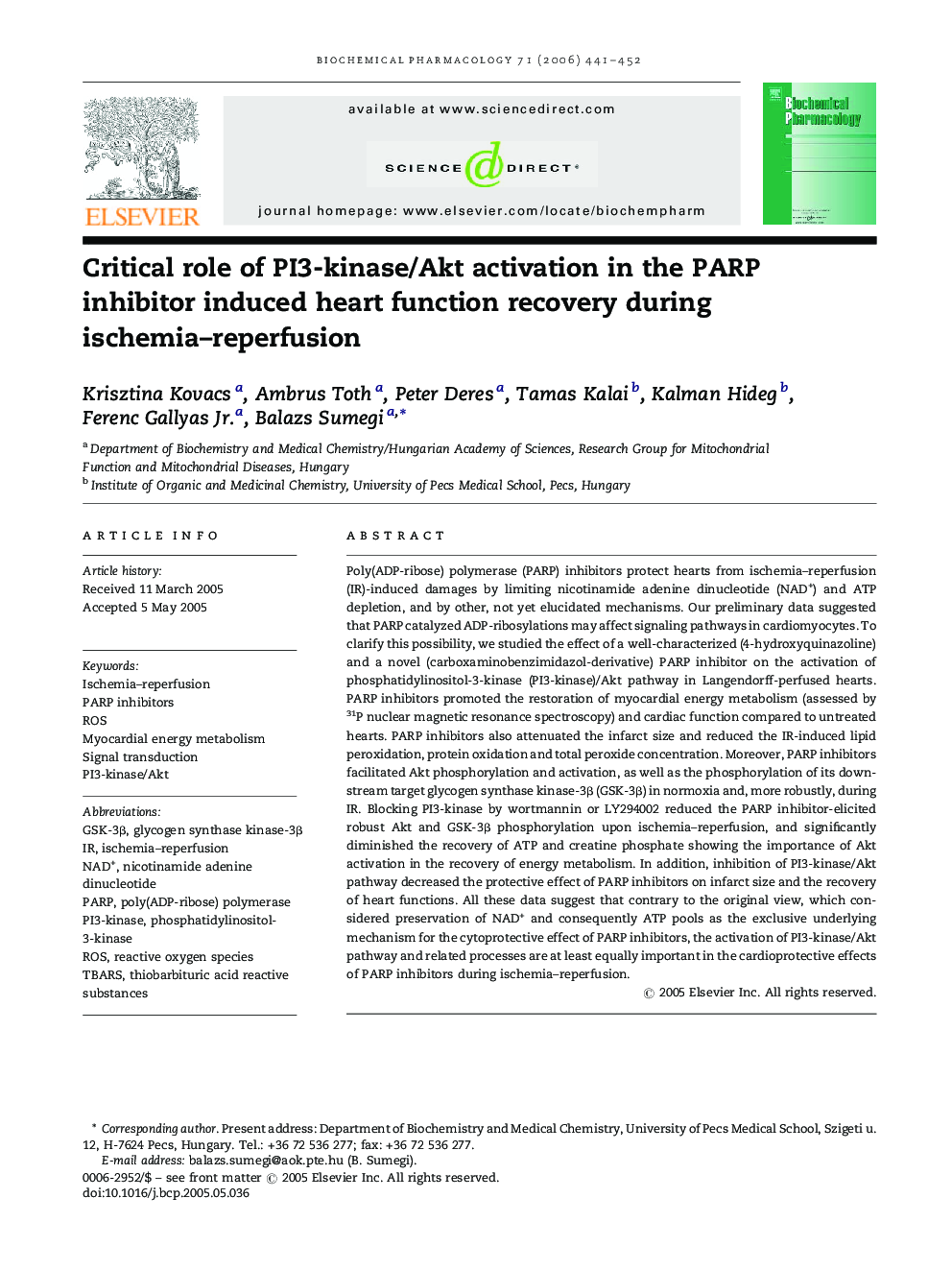| کد مقاله | کد نشریه | سال انتشار | مقاله انگلیسی | نسخه تمام متن |
|---|---|---|---|---|
| 2515642 | 1118540 | 2006 | 12 صفحه PDF | دانلود رایگان |

Poly(ADP-ribose) polymerase (PARP) inhibitors protect hearts from ischemia–reperfusion (IR)-induced damages by limiting nicotinamide adenine dinucleotide (NAD+) and ATP depletion, and by other, not yet elucidated mechanisms. Our preliminary data suggested that PARP catalyzed ADP-ribosylations may affect signaling pathways in cardiomyocytes. To clarify this possibility, we studied the effect of a well-characterized (4-hydroxyquinazoline) and a novel (carboxaminobenzimidazol-derivative) PARP inhibitor on the activation of phosphatidylinositol-3-kinase (PI3-kinase)/Akt pathway in Langendorff-perfused hearts. PARP inhibitors promoted the restoration of myocardial energy metabolism (assessed by 31P nuclear magnetic resonance spectroscopy) and cardiac function compared to untreated hearts. PARP inhibitors also attenuated the infarct size and reduced the IR-induced lipid peroxidation, protein oxidation and total peroxide concentration. Moreover, PARP inhibitors facilitated Akt phosphorylation and activation, as well as the phosphorylation of its downstream target glycogen synthase kinase-3β (GSK-3β) in normoxia and, more robustly, during IR. Blocking PI3-kinase by wortmannin or LY294002 reduced the PARP inhibitor-elicited robust Akt and GSK-3β phosphorylation upon ischemia–reperfusion, and significantly diminished the recovery of ATP and creatine phosphate showing the importance of Akt activation in the recovery of energy metabolism. In addition, inhibition of PI3-kinase/Akt pathway decreased the protective effect of PARP inhibitors on infarct size and the recovery of heart functions. All these data suggest that contrary to the original view, which considered preservation of NAD+ and consequently ATP pools as the exclusive underlying mechanism for the cytoprotective effect of PARP inhibitors, the activation of PI3-kinase/Akt pathway and related processes are at least equally important in the cardioprotective effects of PARP inhibitors during ischemia–reperfusion.
Journal: Biochemical Pharmacology - Volume 71, Issue 4, 14 February 2006, Pages 441–452